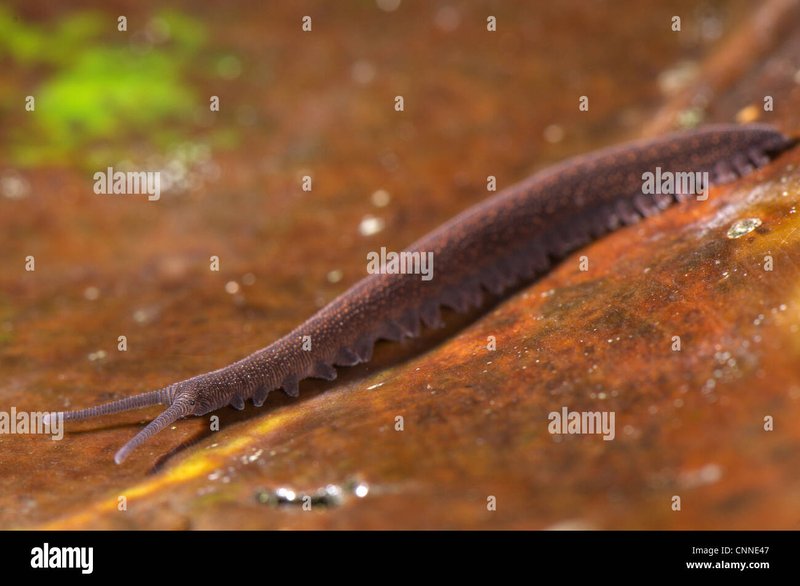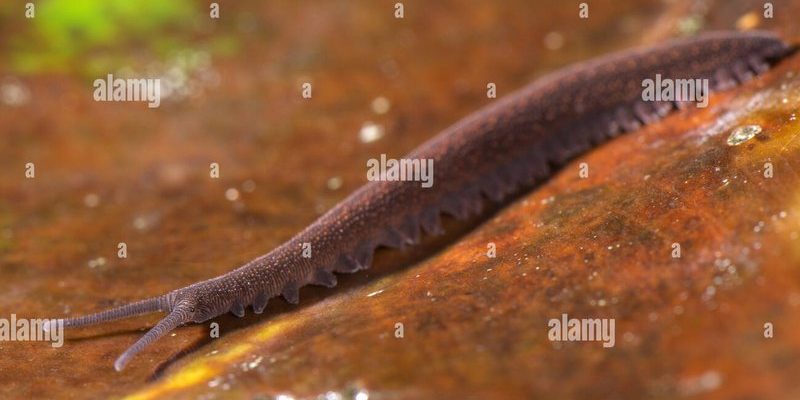
So, what makes velvet worms so special? Imagine tiny, soft-bodied creatures that glide through the forest floor, using their slime to capture other small organisms. They’re not just exciting to observe; they’re actively involved in cleaning up the mess of fallen leaves, twigs, and other organic debris. Let’s dive deeper into how these little wonders contribute to leaf litter decomposition and why it matters for our environment.
What Are Velvet Worms?
Velvet worms, or *Onychophora*, are unique creatures that seem to belong to a different time. They’re often described as a mix of slugs and caterpillars, featuring soft bodies covered with a velvety texture. Found primarily in tropical and subtropical regions, these creatures prefer moist environments, often hanging out in leaf litter or under rocks.
Their segmented bodies are equipped with numerous stubby legs, giving them a somewhat clumsy appearance as they navigate their leafy labyrinth. But don’t let that fool you! Velvet worms are efficient hunters, using a unique method to capture their prey. They exude a sticky slime that immobilizes unsuspecting insects, allowing them to feast on these tiny morsels. This hunting strategy not only plays a role in their survival but also contributes to the overall health of the ecosystem.
The Role of Leaf Litter in Ecosystems
Leaf litter is more than just a messy collection of fallen leaves. It acts as a critical layer of organic matter that supports various life forms. When leaves and other plant materials decompose, they return vital nutrients like nitrogen and phosphorus back into the soil, promoting plant growth. This process is crucial for maintaining the health of ecosystems.
In a way, leaf litter acts like a natural sponge, trapping moisture and creating a habitat for many organisms. From fungi to bacteria to insects, a vibrant community thrives in this rich environment. When these organisms break down the litter, they contribute to the cycling of nutrients, making them available for plants again.
Without creatures like velvet worms, this process would slow down, leading to nutrient depletion in the soil. This imbalance could harm plant growth and, ultimately, the entire food web that relies on those plants.
How Velvet Worms Aid Decomposition
Velvet worms play a pivotal role in the decomposition of leaf litter, working behind the scenes to break down organic matter in several key ways. First, as they move through the leaf litter, they physically stir and mix the material. This aeration helps accelerate the decomposition process by increasing the exposure of organic matter to decomposers like bacteria and fungi.
In addition to stirring up the leaf litter, velvet worms also consume other small organisms that inhabit this layer. By preying on insects and other tiny creatures, they help control populations, which prevents any one species from becoming too dominant. This balance is essential for a healthy ecosystem, as it ensures that no single organism can disrupt the decomposition process.
Moreover, as velvet worms digest their prey, they release waste that is nutrient-rich, further enriching the soil. This waste contains essential nutrients that can be utilized by other plants, effectively linking the velvet worm’s activities back to the health of the overall ecosystem.
The Importance of Microbial Interactions
What you might not realize is that velvet worms contribute to a much larger picture involving microbial life. The decomposition process isn’t solely dependent on the worms themselves; it also relies on a diverse range of microorganisms. When velvet worms break down leaf litter, they create conditions that favor the growth of bacteria and fungi.
These microbes play a critical role in further breaking down organic matter into simpler compounds, which can then be absorbed by plants. The presence of velvet worms enhances microbial activity, making the entire leaf litter ecosystem more productive.
Studies have shown that areas with greater velvet worm populations often have higher levels of microbial diversity. This increase is essential because a diverse microbial community can break down a wider variety of organic materials, leading to more effective decomposition.
Conservation and Future Research
As we learn more about velvet worms and their ecological roles, it’s essential to consider their conservation. These creatures are often sensitive to changes in their environment, particularly habitat destruction and climate change. Keeping their habitats intact is crucial not only for their survival but also for the health of the ecosystems they help support.
Future research into velvet worms can provide insights into their specific contributions to nutrient cycling and decomposition processes. Understanding their life cycles, habitat preferences, and interactions with other organisms can help us develop better conservation strategies.
By studying these unique creatures, we can deepen our understanding of ecosystems and the interconnected nature of life. Every little component, like the velvet worm, plays a part in maintaining the balance of our environment.
Wrapping It Up
Velvet worms might not be the first creatures that come to mind when considering leaf litter decomposition, but they play a vital role in this intricate process. Through their hunting, aeration of the soil, and contributions to microbial life, they help to ensure that nutrients are returned to the soil efficiently.
Understanding how velvet worms contribute to leaf litter decomposition is crucial for appreciating the complex interconnections within our ecosystems. So, the next time you walk through a forest, take a moment to recognize the tiny heroes working hard beneath your feet. They might not wear capes, but they’re doing some of the most important work in nature!

